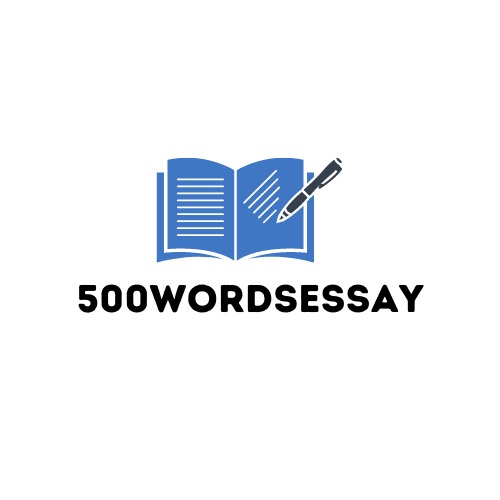 Google Ads Done Right – More Clicks, Less Waste!
Google Ads Done Right – More Clicks, Less Waste!
How Do I Analyze a Prompt for Essay Writing?
Written by dana » Updated on: June 17th, 2025

Understanding an essay prompt is a critical first step in crafting a high-quality essay. Misinterpreting the prompt can lead to irrelevant content or missed objectives. Here, we explore a systematic approach to analyzing essay prompts, helping students and writers produce focused and effective essays.
What Is an Essay Prompt?
An essay prompt provides specific instructions for writing. It can guide your essay’s topic, style, and structure. Whether assigned by a teacher or used as part of an application, prompts set the tone for your work.
Step 1: Break Down the Prompt
Start by reading the prompt carefully. Break it into smaller parts to ensure clarity. Highlight keywords such as "explain," "analyze," or "compare." These terms dictate the type of essay required.
For instance, the keyword “analyze” means you need to break down a topic into its components. This approach ensures your response is aligned with the expectations of the evaluator.
Step 2: Identify the Topic
The topic is the central theme of your essay. To locate it, ask: “What is this essay about?” For example, if the prompt asks, “Analyze the impact of social media on communication,” the topic is “social media” and its effects on communication.
When you clearly identify the topic, you’re better equipped to stay on track. Paperial emphasizes staying focused on the assigned topic to create coherent essays.
Step 3: Determine the Purpose
Every essay serves a specific purpose, such as:
Persuasion: Convincing readers of a viewpoint.
Exposition: Explaining a concept or idea.
Narration: Telling a story or recounting experiences.
Analysis: Examining parts to understand the whole.
Understanding the purpose helps you adapt your tone and style. For example, analytical essays demand objectivity, while persuasive essays may involve emotional appeals.
Step 4: Understand the Scope
Prompts often specify the essay’s scope or limitations. Pay attention to any constraints such as word count, specific examples, or timeframes.
For example, a prompt like “Analyze recent advancements in AI from 2010 to 2020” clearly defines the timeline. Sticking to these constraints ensures your essay remains relevant and concise.
Step 5: Focus on the Questions Asked
Many prompts pose multiple questions or points to address. Break these into subtopics for easier analysis. For instance, consider this prompt:
“Discuss the causes and effects of climate change.”
Here, you must explore both causes and effects. Ignoring one aspect leads to an incomplete essay. Paperial recommends outlining these subtopics before starting your draft.
Step 6: Research Supporting Evidence
Strong essays rely on evidence. Use the prompt to guide your research. Ask:
What sources are most relevant?
Which statistics or examples best support my points?
Paperial offers tools to help students find credible sources, ensuring their essays are well-supported and accurate.
Step 7: Create an Essay Outline
An outline helps organize your thoughts before writing. Based on the prompt, draft a structure with key sections:
Introduction: Address the prompt and introduce your thesis.
Body Paragraphs: Tackle each question or point with evidence.
Conclusion: Summarize your findings and restate your thesis.
This structure ensures clarity and logical flow throughout your essay.
Step 8: Avoid Common Mistakes
Analyzing a prompt requires attention to detail. Common errors include:
Ignoring keywords: Leads to off-topic essays.
Overlooking scope: Results in essays that are too broad or narrow.
Failing to address all parts: Creates incomplete responses.
Paperial’s editing tools can help identify such issues, ensuring your essay remains relevant and impactful.
Step 9: Revise Your Analysis
Before drafting, revisit the prompt. Confirm that your interpretation matches the requirements. Small missteps in analysis can significantly affect your essay’s quality.
Practical Example of Prompt Analysis
Consider this prompt: “Explain how technology has changed education in the past decade.”
Break Down Keywords: “Explain” means to describe and clarify. “Technology” and “education” are key topics. The timeline is the “past decade.”
Identify the Topic: Technology’s impact on education.
Determine Purpose: The essay aims to inform readers about changes.
Understand Scope: Focus only on the past ten years.
Address All Questions: Highlight specific changes and their effects.
Following this approach ensures a well-structured and insightful essay.
Why Prompt Analysis Matters
Accurate analysis is the foundation of a great essay. It saves time and prevents unnecessary revisions. By investing effort in this stage, you lay the groundwork for a focused and engaging essay. Paperial supports students in mastering this essential skill through resources and tools designed for essay excellence.
Conclusion
Analyzing an essay prompt involves careful reading, breaking down components, and understanding its requirements. By following these steps, writers can confidently craft essays that meet expectations. Paperial provides comprehensive writing assistance, empowering students to excel in their academic and professional endeavors.
Note: IndiBlogHub features both user-submitted and editorial content. We do not verify third-party contributions. Read our Disclaimer and Privacy Policyfor details.
Copyright © 2019-2025 IndiBlogHub.com. All rights reserved. Hosted on DigitalOcean for fast, reliable performance.















